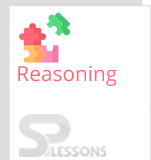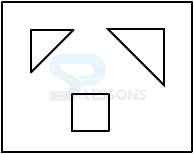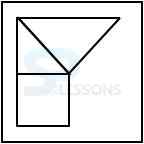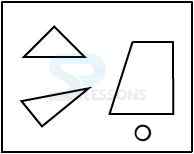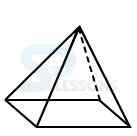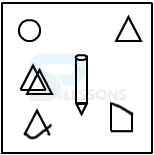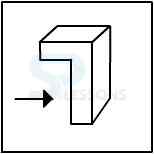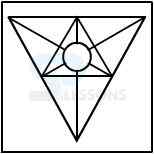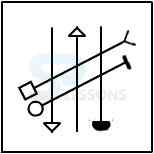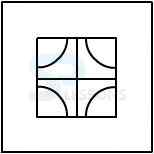 Description
Description
Figure formation and analysis deals with problems of the following types:-
1. Arrangement of a figure from different given parts.
2. Arrangement of a three dimensional figure from paper set patterns.
3. Fragmentation of a figure into simple parts.
4. Selecting the examples with identical segments.
5. Seeing a three dimensional figure from various positions.
6. Selecting the identical figure.
7. Pattern rearrangement.
Reasoning Ability -BANKING|SSC|RAILWAYS|INSURANCE|RECRUITMENT EXAMS – EBOOKS
 Model
Problems
Model
Problems
Model 1: From the pieces given in figure X, find out which of the figures a, b, c and d can be framed.
X.
Options:-
Solution:
Model 2: From the pieces given in figure X, find out which of the figures a, b, c and d can be framed.
X.
Options:-
Solution:
Given pieces in figure X form the figure (c) from the given alternatives.
Model 3: Which of the following figures shown below, when folded along the dotted lines, will form a pyramid shaped box with a rectangular base?
Solution:
when folded along the dotted lines, figure (d) will form a pyramid shaped box with a rectangular base as shown below:
Model 4: To frame figure X, which of the following alternatives a, b, c and d will absolutely build?
X.
Options:-
Solution:
Figure (c) will exactly make up the key figure X.
Hence, answer is figure (c).
Model 5: The given predefined elements of the key figure X are found in which of the given alternatives?
X.
Options:-
Solution:
The alternative in which the predefined elements of the key figure X are found is in figure (c).
Therefore, figure (c) is the correct answer.
Model 6: The given predefined elements of the key figure X are found in which of the given alternatives?
X.
Options:-
Solution:
The alternative in which the predefined elements of the key figure X are found is in figure (c).
Therefore, figure (c) is the correct answer.
Model 7: The figure of a solid marked X is given below took after by four choices a, b, c and d. If the solid is viewed in the direction of the arrow, which one of the four alternatives will represent the true view?
X.
Options:-
Solution:
By observing the figure X, it is clear that if the solid is viewed in the direction of the arrow, figure (c) will represent the true view.
Therefore, answer is figure (c).
Model 8: Find out how will the key figure X look like after rotation? (Navodaya Vidyalaya 2005)
X.
Options:-
Solution:
After rotation of figure X, it will look like the figure (d).
Therefore, figure (d) is the correct answer.
Model 9: Find out how will the key figure X look like after rotation? (Navodaya Vidyalaya 2005)
X.
Options:-
Solution:
After rotation of figure X, it will look like the figure (c).
Therefore, figure (c) is the correct answer.
Model 10: Find out which of the figures a, b, c and d is a rearrangement of the parts of the given figure X.
X.
Options:-
Solution:
Figure (a) is the alternative which is formed after rearrangement of pieces of the given figure X.
